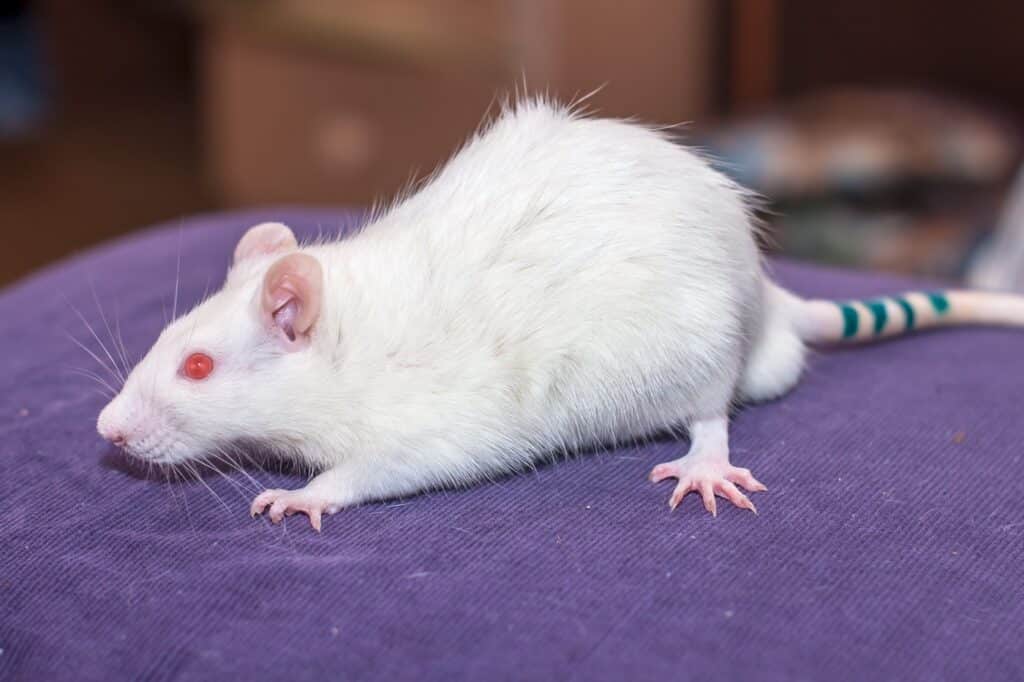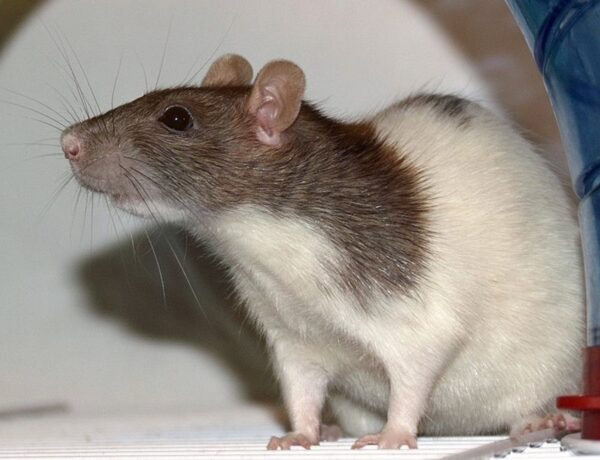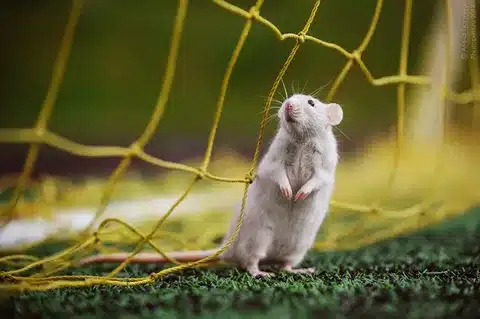Introduction
Are Hamsters Rats: Hamsters and rats, though both belonging to the vast family of rodents, are distinct and captivating creatures that have found their way into the hearts and homes of many pet enthusiasts around the world. While they share some common characteristics, such as their small size and sharp teeth, these two animals differ significantly in terms of appearance, behavior, and care requirements. We will delve into the unique characteristics of hamsters and rats, shedding light on their individual personalities, habits, and the joys they bring to those who choose to welcome them into their lives as beloved companions.
As we embark on this journey to understand hamsters and rats, it’s essential to recognize that they each represent distinctive aspects of the fascinating rodent world. Hamsters, with their adorable round bodies and endearing cheek pouches, often evoke images of small, furry balls of energy. They are known for their solitary nature, making them an ideal choice for individuals seeking a pet that requires minimal social interaction. Hamsters come in various species, each with its unique traits, and the dwarf hamsters, which are more social and can sometimes be kept in pairs or small groups.
Rats, with their sleek, long tails and highly social behavior, offer a different experience altogether. These intelligent creatures are often compared to small dogs due to their ability to form deep bonds with their human caregivers. Rats thrive in the company of their own kind and are known for their inquisitiveness, problem-solving skills, and trainable nature. Their complex social hierarchy and playful antics make them a favorite among those looking for a more interactive and social pet.

Are hamsters basically rats?
There are many key differences between a rat vs hamster. Hamsters are members of the Cricetidae family, while rats are members of the Muridae family. Rats have extremely long tails, while hamsters do not. Hamsters exhibit a wider variety of colors and patterns compared to the relatively plain appearance of rats.
Taxonomy: Hamsters belong to the Cricetidae family, whereas rats are part of the Muridae family. These distinct family classifications signify their evolutionary differences.
Physical Characteristics: One of the most noticeable differences is the length of their tails. Rats typically have long, slender tails, whereas hamsters have much shorter and stubbier tails. This tail length difference is often a defining feature between the two.
Appearance: Hamsters display more diverse colors and coat patterns than rats, which generally have a plain appearance. This variability in hamster coloration has resulted from selective breeding in captivity.
Size: Rats are generally larger than hamsters, both in terms of body length and weight. Rats can be about twice the size of the largest hamster species.
Behavior: Rats are known for their high level of social interaction and intelligence. They are highly trainable and often form strong bonds with their human caregivers. Hamsters, on the other hand, are more solitary creatures and tend to be less interactive with humans.
Lifespan: Rats typically have a longer lifespan than hamsters. Rats can live for up to 2-3 years or more, while hamsters have a shorter lifespan, usually around 2 years.
Is a hamster related to a rat?
Common pets throughout the world, hamsters are small, cute and readily available in the pet trade. Two genera contain the most common pet hamster species: Mesocricetus Syrian hamster and Phodopus dwarf hamsters. Hamsters are closely related to other small rodents including mice, rats and voles.
Hamsters are indeed related to rats, as they are all part of the same order of mammals called Rodentia. Rodents form the largest mammalian order, including species like mice, rats, hamsters, voles, and squirrels. Despite differing in appearance and behavior, these animals share a common ancestor and belong to the same taxonomic order.
Hamsters and rats, as distinct species within Rodentia, share a common evolutionary history as rodents.
Are hamsters rats or mice?
Mice and hamsters are taxonomically similar, belonging to the same kingdom, phylum, class, order and superfamily. They’re both rodents. There are several species of each, but each belongs to a unique subfamily. Mice belong to subfamily Murinae, while hamsters are subfamily Cricetinae.
Mice and hamsters are both rodents, but they are not the same species, nor are they the same as each other. As you mentioned, they belong to the same larger taxonomic order, which is Rodentia. They are classified into different subfamilies within this order. Mice belong to the subfamily Murinae, and there are various species of mice within this subfamily, including the common house mouse Mus musculus.
Hamsters, on the other hand, belong to the subfamily Cricetinae. Species like the Syrian hamster Mesocricetus auratus and various dwarf hamsters Phodopus spp are part of this subfamily. While mice and hamsters are both rodents and share certain taxonomic similarities, they are distinct groups with their own unique characteristics, behaviors, and appearances.
How do hamsters compare to rats?
Rats are bigger-bodied than hamsters, though the addition of their tail can make them seem much larger than they actually are. They’re also more active, which necessitates a considerably larger cage if they are to remain happy.
Size: Rats are generally larger than hamsters, both in terms of body size and weight. Rats can weigh anywhere from 200 to 500 grams or more, depending on the species and age, while hamsters are usually much smaller, with adult weights ranging from 25 to 200 grams. Rats also have long, slender tails that can make them appear larger than they are.
Activity Level: Rats are known for their high activity levels and social nature. They require more space to move around and explore compared to hamsters. Hamsters, on the other hand, are generally more solitary and nocturnal, which means they are active during the night and spend more time sleeping during the day.
Cage Size: Because of their larger size and higher activity level, rats require a considerably larger cage compared to hamsters. Rats need space to climb, play, and interact with other rats, making a spacious and enriched environment crucial for their well-being. This can result in higher costs for a larger cage and more accessories.
Social Behavior: Rats are highly social animals and thrive in the company of their own kind. It is often to keep rats in pairs or small groups to prevent loneliness and provide mental stimulation. Hamsters, on the other hand, are more solitary creatures and are typically kept alone to avoid aggression and territorial disputes.
Cost: Rats may require a larger cage and more accessories, which can lead to higher initial setup costs compared to hamsters. Ongoing costs for food, bedding, and healthcare may vary but are generally similar between the two.
Do hamsters carry diseases like rats?
There are disease concerns with both wild rats, mice and pets rats, mice, hamsters, gerbils, guinea pigs, rodents and rabbits. They can carry many diseases including hantavirus, leptospirosis, lymphocytic choriomeningitis LCMV, Tularemia and Salmonella.
Salmonella: Rodents can also carry this bacterium, although it is commonly associated with reptiles. Handling rodents or their habitats without proper hygiene can lead to Salmonella infection.
Lymphocytic Choriomeningitis LCMV: Hamsters, along with mice and rats, can carry LCMV, a viral infection. Humans can contract it through contact with contaminated bedding, urine, or saliva.
Hantavirus: While more commonly associated with wild rodents, some domesticated rodents like pet hamsters can also carry hantaviruses, which humans can contract through contact with rodent droppings or urine.
Leptospirosis: Humans can contract this bacterial infection through contact with contaminated water, soil, or tissues of infected rodents, including hamsters.
Tularemia: Although rare, hamsters can also carry Francisella tularensis, the bacterium responsible for tularemia. IYou can contract it through contact with infected rodents or their excretions.
Why are hamsters pets but not rats?
Rats are exceptionally intelligent, they learn their names, many come when called, and they can learn all manner of tricks. For another, they are highly social creatures, whereas hamsters are solitary.
Historical Trends: Historically, hamsters gained popularity as pets in the mid-20th century, especially the Syrian hamster, bred for the pet trade. Their small size and relatively simple care requirements made them appealing to families and individuals looking for low-maintenance pets.
Size: Hamsters are generally smaller and less intimidating in appearance than rats. Their compact size makes them suitable for individuals with limited space and may be less daunting to people who are new to keeping rodents as pets.
Temperament: As you mentioned, hamsters are solitary creatures by nature, which can make them easier to care for in terms of social dynamics. They don’t require companionship and can thrive when kept alone. Rats, on the other hand, are highly social animals and typically do better when kept in pairs or small groups. Rats’ social nature can complicate their care, and not everyone may be ready for the associated responsibilities.
Public Perception: Historically, rats’ association with disease and filth has fueled negative stereotypes about them. However, pet rats are different from their wild counterparts and are generally clean and affectionate animals. Nevertheless, these perceptions can influence people’s choices when it comes to selecting a pet.
Intelligence and Social Behavior: As mentioned earlier, rats are renowned for their high intelligence and sociable nature. They can form strong bonds with their human caregivers and are capable of learning various tricks and commands. This makes them highly interactive and engaging pets. However, not everyone is aware of these qualities or may be hesitant to care for a more social animal.
How smart is a hamster?
Hamsters are naturally smart animals that can solve problems and learn from past experiences. They can respond to human vocal cues, learn complex cognitive skills, understand the behavior-and-reward system, and keep their living space organized.
Problem Solving: Observers have noted hamsters solving simple problems, like navigating mazes or accessing hidden food in puzzles. They can use their sense of smell and memory to navigate and locate resources.
Learning from Experience: Hamsters can learn from past experiences and adapt their behavior accordingly. For example, they can remember the locations of food sources and avoid areas where they’ve encountered threats or challenges in the past.
Response to Vocal Cues: Some hamsters can respond to their owners’ vocal cues or commands, such as recognizing their name or coming when called. However, this responsiveness can vary from hamster to hamster and may depend on their individual temperament and socialization.
Behavior-and-Reward System: Rewards, such as food, motivate hamsters, and they can learn to associate specific behaviors with these rewards. You can utilize this in training and conditioning.
Nesting and Organization: Hamsters are known for their nesting behavior and their ability to keep their living space organized.They create intricate burrows and store food for later use, showcasing their ability to plan and organize their environment.
Are hamsters more friendly than rats?
Rats are exceptionally intelligent, they learn their names, many come when called, and they can learn all manner of tricks. They are highly social creatures, whereas hamsters are solitary. This means rats actually like being around humans and are often affectionate, while most hamsters don’t and are not.
Social Nature: Rats are highly social animals by nature. They thrive in the company of their own kind and form strong bonds with their human caregivers. When kept in pairs or small groups, rats often engage in grooming, play, and even cuddling with each other. This social behavior extends to their interactions with humans, and they can become quite attached to their owners.
Intelligence: Rats are exceptionally intelligent, as you mentioned. Their ability to learn their names, come when called, and perform tricks is a testament to their cognitive abilities. Their intelligence also contributes to their adaptability and their capacity to form meaningful relationships with humans.
Affection: Many rat owners describe their pets as affectionate and loving. Rats often enjoy human companionship, including being handled, cuddled, and spending time with their human caregivers. They can develop a strong bond with their owners and seek out interaction and attention.
Hamsters are generally solitary animals in the wild, which means they are not inherently social creatures. While hamsters can become accustomed to human interaction and handling, their social needs and behaviors are different from those of rats. Hamsters may not seek out human companionship in the same way rats do, and some hamsters may be more reserved or independent in their interactions with humans.

Conclusion
Hamsters and rats may both belong to the rodent family, but they represent distinct and captivating aspects of the pet world. Hamsters, with their charming round bodies and solitary habits, offer a low-maintenance and endearing companion for those who prefer a more independent pet. Rats, on the other hand, with their sleek appearance and highly social nature, provide a dynamic and interactive relationship for those seeking a more engaging animal companion.
Each species has its unique characteristics, care requirements, and potential benefits as a pet. Whether you choose a hamster or a rat, the bond you develop with these small creatures can be profoundly rewarding. It’s essential to consider your lifestyle, preferences, and commitment level when making a choice, as both hamsters and rats can bring joy, laughter, and a sense of wonder into your life.
The decision between hamsters and rats comes down to personal preferences and the kind of pet experience you desire. Whichever path you choose, the world of hamsters rats is rich with opportunities for companionship, learning, and love, offering a delightful adventure for those who embark on it.





No Comments